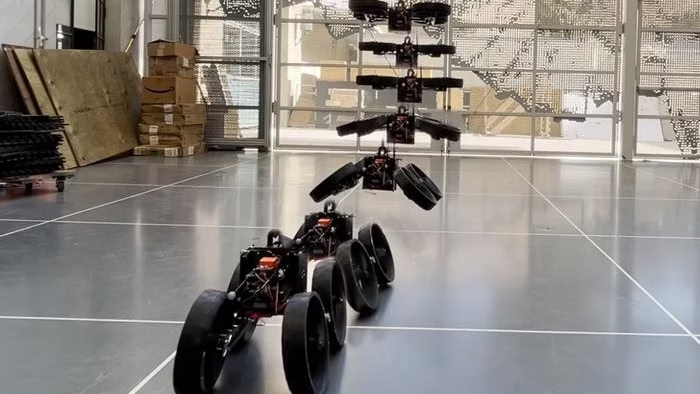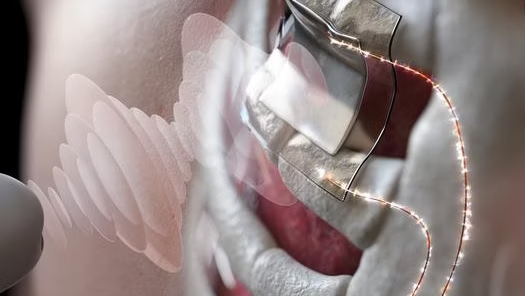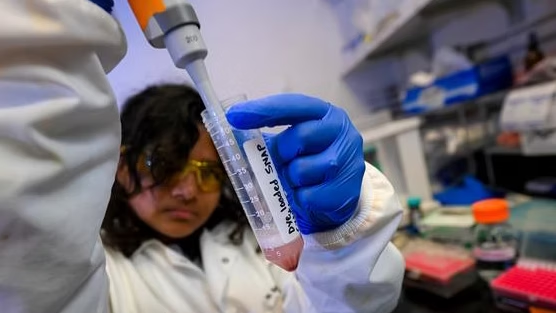From Washington University in St. Louis 06/03/24

With the U.S. government’s goal to reduce emissions from transportation as part of a net-zero climate goal by 2050, efficient and reliable batteries are a necessity.
A collaborative team of researchers led by the McKelvey School of Engineering at Washington University in St. Louis is working toward that goal by developing an energy storage system that would have a much higher energy density than existing systems.
With $1.5 million from the U.S. Department of Energy’s Advanced Research Projects Agency-Energy (ARPA-E), Xianglin Li, associate professor of mechanical engineering & materials science, will lead a multi-institutional team to develop a lithium-air (Li-air) battery with ionic liquids to deliver efficient, reliable and durable performance for high-energy and high-power applications.
The Phase I, 18-month funding is part of $15 million ARPA-E awarded to 12 projects across 11 states to advance next-generation, high-energy storage solutions to speed electrifying the aviation, railroad and maritime transportation sectors.
Funded through the Pioneering Railroad, Oceanic and Plane ELectrification with 1K energy storage systems (PROPEL-1K) program, projects aim to develop emission-free energy storage systems with “1K” technologies capable of achieving or exceeding 1,000-Watt-hour per kilogram (Wh/kg) and 1,000 Watt-hour per liter (Wh/L).

“The current commercially available lithium-ion batteries have the specific energy of around 200 watt-hour per kilogram, and those would not work because 1,000 watt-hour per kilogram is beyond their thermodynamic limit,” Li said.
“We need to increase that specific energy density by four to five times, so this is a very aggressive goal.”
If successful, PROPEL-1K technologies would electrify regional flights traveling as far as 1,000 miles with up to 100 people, all North American railroads, and all vessels operating exclusively in U.S. territorial waters, the agency said.
Li’s team’s concept would use pure lithium in the anode because it has the highest energy density.
They will use a very thin separator with unique properties to transfer the lithium ion back and forth.
The cathode must contain catalysts that make the electrochemical reaction of oxygen reduction and evolution reactions happen quickly and efficiently.
“All of these components must be put together almost perfectly, because that 1,000 watt-hour per kilogram is near the limit of any energy storage technology,” Li said.
“That’s why we have a large team with complementary experts on different parts of this whole system. My team will lead the overall design of the system and focus on the cathode where the oxygen reaction would occur.”

For the proposed Li-air flow battery, the team will use a unique electrolyte: ionic liquids with high oxygen solubility, low viscosity, ultra-low volatility and high ionic conductivity.
The team will also customize catalysts and lithium metal protection membranes to enhance battery performance while reducing power consumption during electrolyte circulation.
Preliminary experimental results have shown a tenfold increase in capacity by using a circulating electrolyte.
“Commercial batteries use organic electrolytes, but because our Li-air cell is an open system, that electrolyte would evaporate over time,” Li said.
“Ionic liquid is a salt that acts like a liquid but does not evaporate and can flow at room temperature.”
Co-principal investigators on the project include Peng Bai, associate professor, and Vijay Ramani, the Roma B. & Raymond H. Wittcoff Distinguished University Professor, both in the Department of Energy, Environmental & Chemical Engineering in McKelvey Engineering; Mark Shiflett, Foundation Distinguished Professor at the University of Kansas; Ivan Vlassiouk, senior research staff at the Oak Ridge National Laboratory; James Saraidaridis, principal research engineer at Raytheon Technologies Research Center; and Sherry Quinn, electrochemist at Powerit.
Together, they will work to develop a prototype that may be further developed and taken to market.
The team also will conduct an economic analysis of its Li-air flow battery systems to the aviation, railroad and maritime transportation sectors to highlight the importance of advancing energy storage technologies beyond the current Li-ion battery technology.












